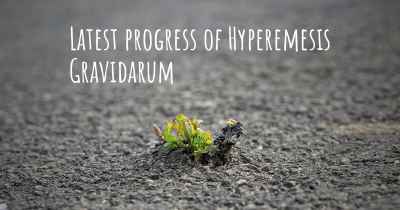Maegan Noel is smiling for the first time in a long while. She’s snapping photos of a beautiful family of four as they pose at an abandoned railroad station in Grapevine. Nothing — not even a recent playoff disappointment from her beloved Texas Rangers — can keep Maegan from being happy.
After all, things almost turned out much differently.
Maegan, 30, a professional photographer based in Allen, could barely muster the strength to talk or walk just a few months ago. Hyperemesis gravidarum or “HG,” a debilitating affliction that causes extreme nausea, dehydration and weight loss, struck Maegan while she was pregnant with her first child.
At its worst, the illness made doctors question if the baby could survive the pregnancy and made Maegan question whether she wanted to remain among the living.
“I didn’t know your mind could think of such dark thoughts,” she says. “Every day was a nightmare.”
Fortunately, Maegan found solace and support in unlikely places — and leaned on her faith as she fought for her life and the life of her daughter.
Picture perfect
Maegan, who graduated from the University of North Texas in 2013, specializes in weddings, newborns and engagement photography. Before launching her private photography service from her apartment in Allen, Maegan snapped photos for the Denton Record-Chronicle as a contributor and for the sports photography company Your Game Face, which she still works with on occasion.
She first delved into photography as a way to capture moments for her and her friends.
“It started off as a fun hobby,” she recalls of those early days with her first camera. “I just loved helping people make memories.”
That love soon translated into a career. After picking up her first digital camera, Maegan was asked to take engagement shots for a couple she knew.
“I had no idea how to do that, but I said yes and worked my way through it,” she says. “The rest is history.”
Since then, she’s made a name for herself capturing beautiful moments for couples and newlyweds, and last year she found a love of her own when she started dating Ryan Noel, who works in advertising in Allen.
Maegan and Ryan met in a Facebook church group for young adults. Sara Blankenship, Maegan’s friend and former UNT classmate, saw that it was a perfect match from the beginning.
“He’s amazing and completely selfless,” she says. “Just like her.”
They married on Jan. 2, and it was the kind of beautiful ceremony that Maegan typically captures for her clients.
Shortly after their wedding, the couple learned Maegan was pregnant, and the first month was relatively seamless. Then, came the extreme nausea.
More than morning sickness
When the vomiting persisted despite heavy anti-nausea medications, Maegan knew it was worse than morning sickness.
“It was nausea and pain all day, every day,” she recalls. “By April, I had been to the [emergency room] 12 times.”
That same month, doctors put her on home health care, and she received a new IV in her hand every three days because she wasn’t able to drink or eat anything.
“I knew it had to be something serious,” she says. “So I did my own research.”
After extensive digging online, Maegan determined it was probably HG, and her doctor agreed. It was the first HG case he had in 15 years.
According to the Hyperemesis Education and Research Foundation, HG affects 1 percent to 3 percent of all pregnancies, but knowledge of the illness is limited.
Because the criteria for diagnosis vary, and little research is done to differentiate HG from morning sickness, the impact of HG is misunderstood and underestimated.
“It was shocking to see how little doctors knew about it,” Maegan says. “Other people thought I was milking it, or thought it was just morning sickness, and that was crushing.”
Unfortunately, it wasn’t the first time Maegan was overwhelmed by a bad illness.
Splitting the seas
Ten years prior, she was stricken by Crohn’s disease of the esophagus. The illness caused her to lean on her faith in God.
“I gave my life and trust to him, and trusted that I would get through it,” she says. “And I did.”
She relied on her faith once again during the March to June period of her struggle with HG, a time that Maegan notes was the hardest.
Unable to leave the house or even muster the strength to talk, she lost touch with longtime friends. Her husband felt helpless.
“The hardest thing was watching her go through it and knowing I couldn’t do anything about it,” Ryan says. “We had just gotten married, and all I wanted was to be a good husband. But I couldn’t.”
Blankenship remembers talking to Maegan through texting, which was the only way Maegan could keep in touch with the friends and family she hadn’t been able to see in months.
“No matter what she was feeling or going through, she always made sure to ask me how I was doing,” Blankenship said. “That’s just the kind of person she is.”
By May, Maegan had lost 20 pounds from her pre-pregnancy weight, and her faith was shaken.
“I kept thinking, ‘This is gonna kill me,’” she said. “And I just wanted to know: ‘Why me?’”
At the darkest hour, Maegan turned to the praise and worship music that helped her when she was afflicted with Crohn’s disease.
In particular, Maegan remembers repeatedly thinking about a line from “No Longer Slaves” by Bethel Music.
You split the seas so I could walk right through them / My tears are drowned in perfect love.
“I prayed and prayed, and I had to keep reciting those lyrics until my mind caught up with my heart,” she said.
Support systems
At the same time, she found solace in another unlikely place: Facebook. Maegan stumbled upon an online support group for women afflicted with HG, and was surprised at how many women experience the same emotions.
“There are so many women out there who were this way, and in a way, that was comforting,” she remembers. “I realized I wasn’t alone.”
She was nearing full term at this point, but her condition had worsened — the daily injections created massive bruises and welts, and she eventually ran out of spots to stick. To complicate matters, she could only drink 4 ounces of liquid a day.
She was on a dual-port peripherally inserted central catheter (PICC line) that restricted movement. Her work and social life were barely existent.
“It was devastating to lose touch with friends and not be able to work,” she recalls. “I never wanted to let anyone down. God got me through it once before, and I had to believe he would again.”
Finally, close to full term, the nightmare appeared to be over.
On Sept. 19, Maegan delivered her baby, a daughter they named Everly, at 37 weeks. However, Everly suffered from intrauterine growth restriction, a condition in which the baby doesn’t grow to a normal weight during the pregnancy.
Everly was born 4 pounds, 4 ounces, and had to stay in the intensive care unit for newborns.
But the Noels, resolute after a traumatic eight months, had faith that Everly would soon return to their arms, and after nine days in intensive care, she did.
Maegan, Ryan and newborn Everly went home to their apartment in Allen, and life began to return to normal.
Eventually, Maegan gathered the strength to return to work, and her passion for photography has helped her heal after a trying year.
She’s back at work, and if that day on the tracks in Grapevine is any indication, she hasn’t missed a beat.
After the storm
“Now look at me and smile.”
Maegan snaps a photo of the two children on the train tracks and looks down at her camera to review the shot. A grin stretches across her face, and she looks back up at her two rambunctious subjects. “It’s perfect.”
The photographer remembers crying joyfully on her way home from the first photo shoot after her illness. The emotions were overwhelming — she was returning to the craft she loved, and was once again helping others make their dreams come to life through her work.
Most importantly, she was returning home to a healthy Everly.
She may not know what the future holds, but that’s fine with her. She has her camera, her beautiful family and unyielding faith as a shield in times of struggle.
“I’m happy to be where I am,” she says. “What else can I ask for?”
IN THE KNOW
Hyperemesis gravidarum
- Symptoms include nausea, vomiting, dehydration and weight loss. It generally strikes between the fourth and sixth week of pregnancy and may be at its worst around weeks nine to 13. Symptoms usually get better by the 20th week, but not always.
- Doctors don’t know what causes it, but they believe it’s related to a rise in hormone levels.
- Treatment includes bed rest or hospitalization in severe cases and anti-nausea medications. Intravenous fluids help to combat dehydration. The inability to eat could lead to use of a feeding tube. Herbs, ginger, and peppermint can help with nausea.
Source: Web MD







